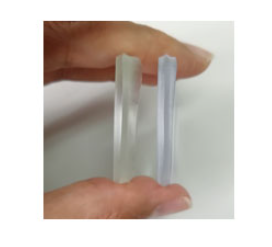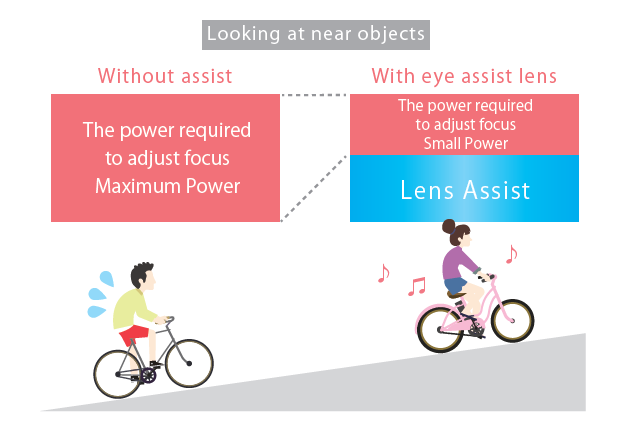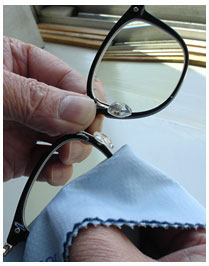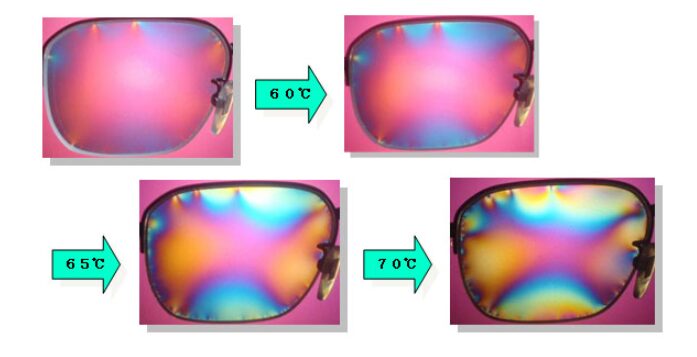This time, we would like to provide advice for those who are concerned about the thickness of lenses for myopia.
A lens for myopia is thinnest in the central area (eye position = fitting cross) and becomes thicker as the distance from the center increases. The area around the diagonally downward point on the ear side of eyeglasses is the farthest position, where the lens is thickest (when there is no impact of astigmatic power). The change in thickness is not in direct proportion to the distance but, rather, rapidly increases like drawing a parabola. The thickness of a lens acceleratively increases as the power increases, and the thickness is greatly different depending on the distance. This is the reason why optometrists ask customers to “select a smaller frame.”
To reduce the thickness of lenses even just a little, (1) select a frame of a smaller size, (2) select thin lenses, or (3) select a thin design. Thus, please note that even when you select thin lenses or a thin design, lenses may be thicker if the size of the frame selected is larger than the previous one when the power is the same.

When selecting a thin type lens, the point is the index. Eyeglass lenses are designed to change the focal length by bending light, and this means that the thickness of a lens with a higher index, or higher power to bend light, can be reduced even if the power is the same. The indexes of our single focal point plastic lenses are 1.50, 1.60, 1.67, 1.70, and 1.76 (highest in the world), and those of our single focal point glass lenses are 1.604, 1.705, 1.807, and 1.892.
Next, one of the thin designs is the aspheric design, which reduces the thickness of the lens while suppressing distortion in the circumferential area. And the aspheric design is classified into a double-sided aspheric design and a (single-sided) aspheric design. Double-sided aspheric design lenses are the thinnest, followed by aspheric design lenses and then by spheric design lenses. Tokai Optical’s spherical design plastic lenses are set to indexes of 1.50 and 1.60, aspheric design and double-sided aspheric design plastic lenses are set to indexes of 1.60, 1.67, 1.70, and 1.76. All of our spheric design glass lenses and aspheric design glass lenses are set to 1.807 and 1.892.
When selecting plastic lenses or glass lenses, it is necessary to consider their advantages and disadvantages. At present, most customers select plastic lenses because of their reduced thickness and improved resistance to scratches. However, some customers requiring lenses with strong power select glass lenses as they desire their lenses to be thinner even just a little.
Once the power and the frame are determined, it is a good idea to select lenses after asking the optometrist about the approximate thickness of each lens type. In most cases, it takes some time for the optometrist to make a reply to you because he/she contacts lens manufacturers over the phone, via chat, by e-mail, etc., but its information must be very helpful.
As we have described thus far, there are many types of eyeglass lenses, and considering the combination with the power and the eyeglass frame, it is difficult to select appropriate lenses. However, we hope that our website (this One-point Advice in particular) will be of a little help to all customers.





